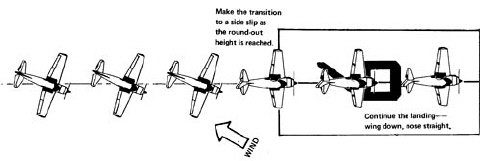Sure does. It explains that my original CFI had some freakin common sense, and was not one of these book thumping regurgitative monkeys on this particular subject. He was an excellent CFI. And I have a bookshelf full of flying knowledge books that I've read, so you can cut the academic superiority act. I learned to fly in a tailwheel airplane with a big rudder and no flaps. Want to steepen your approach? Slip. Want to land in a x-wind without wadding the airplane up? Slip at some point before touchdown. Please inform me what I'm missing.
I know what this made up "book" difference is between side and forward slip that people get their panties twisted up about. It doesn't make a bit of difference. I never made an effort to try very hard to remember which is which. Back when Wolfgang Langeweische wrote 'Stick and Rudder' (which BTW beautifully and comprehensively nails every fundamental flight control concept that pilots should know) there was none of this side vs. forward slip nonsense. There was only the term
sideslip - used to describe what you do to lose altitude or to touch down properly in a x-wind. Somewhere along the way the FAA felt the need to invent a problem that doesn't really exist.
Of course, according to dturri, nobody can do a real sideslip anymore. Millions of flying videos on Youtube, and apparently this is demonstrated nowhere. But I guess I, like so many others, have this fundamental hole in my flying knowledge and ability that's going to cause me to wad up my Pitts someday.



 Maybe there's a cow grazing on the end of the runway and you don't want to curdle its milk? Or a sailboat mast? Or a sycamore tree? The list seems endless...
Maybe there's a cow grazing on the end of the runway and you don't want to curdle its milk? Or a sailboat mast? Or a sycamore tree? The list seems endless...
